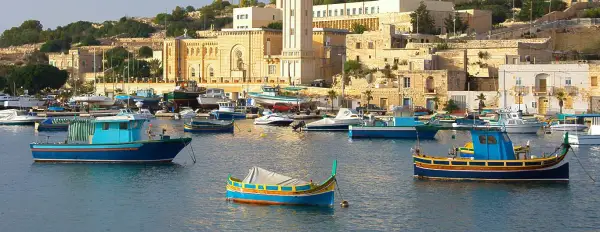- Overview
- Info & Inclusions
- Itinerary
- Map & Hotels
- Photos
- Dates & Prices
- Max Group Size 18
- Visit a Saharan town and UNESCO World Heritage Site
- Shop in beautiful colourful souks
- Go back hundreds of years as you explore preserved medieval architecture and ancient sites
- Guided visit to Legendary Carthage
- Roman sites Sufetula, Dougga, Bulla Regia
- Pre-historic temples of Hagar Qim and Ggantija
- Colourful fishing village of Marsaxlokk
- Singles friendly (view options for single travellers)
In Tunisia we spend time in Carthage, a region founded in 814BC by Phoenicians from the eastern Mediterranean and one that the Romans entirely destroyed in the 2nd century BC before incorporating it into the Roman Empire.
In Malta, we sail the routes of the Knights of St. John and the great Ottoman fleet and bear witness to monuments that can only be fully appreciated from the sea, saunter through beautiful towns and gardens, learn about Maltese prehistory in the southern regions of the island and visit its most important historical sites. Malta's abundance of attraction means we'll be busy for our last couple of days on our tour, but it'll be well worth the rewards.
- MealsSavour authentic flavours with included daily breakfasts and dinners at hotels or handpicked local restaurants—immersing you in local cuisine without worrying about reservations or budgets.
- Transport & Logistics
Private air-conditioned coaches and included internal ferries and flights—ensuring hassle-free travel so you can focus entirely on the discoveries ahead.
"Adventures Abroad tour leader's management and guest services managed the tour with great skill and dedication. The tour leader was on top of every move and transfer. We have not experienced any issues with logistics and had a great time."
~ JULIA O"The tour leader did an excellent job coordinating some difficult travel logistics, power outage issues and resolving problems and dealing with guests who had unrealistic expectations."
~ CYNTHIA COLLINS - Expert Guidance
Unlock insider secrets at every landmark with your full-time Tour Leader and expert local guides , all gratuities covered—no hidden tipping surprises—so you immerse fully in your destination's stories, worry-free. (Except for the tips to your tour leader at the end of your tour.)
"Amazing tour guide. Our tour guide was very well organized, Her passion, knowledge, and enthusiasm completely transformed the travel experience into something truly unforgettable..."
~ MELANIE LEMAIRE"Highly recommend every trip with Adventures Abroad. It's a well organized and well thought out adventure. The tour leaders are friendly, knowledgeable and experienced professionals. Highly recommend this company."
~ SUSAN WALL - Sightseeing & EntrancesAll entrance fees for sites visited as per the itinerary—no hidden costs—so you can explore ancient ruins and excursions with complete peace of mind.
- AccommodationsUnwind in clean, well-located 3 to 4-star hotels with private en suite facilities—handpicked for comfort and convenience after each day's discoveries—so you can rest easy knowing your stay supports the real adventure, not steals the spotlight.
- Small Group
Discover the world in small groups of up to 18 travellers plus your expert Tour Leader—unlocking spontaneity, off-the-beaten-path adventures, and genuine connections at a relaxed pace, free from crowds.
"Looking Forward to My Next Adventure The best feature of the Adventures tour was the small size that allowed the group to quickly load up, let everyone get acquainted within the first 24 hours, capitalize on unplanned surprises along..."
~ PHILIP BLENSKI"Good value for a great time I have traveled with Adventures Abroad for over 20 years now. Well thought out, interesting itineraries and the other travelers congenial and friendly. The price always seems fair and overall a..."
~ Trusted Customer - Airport Transfers For Land & Air CustomersWe handle hassle-free airport transfers for all our land and air tour customers—plus early arrivals or late departures when you book extra hotel nights directly with us for added peace of mind.
- International airfare to/from the tour.
- Tour Leader gratuities, lunches, drinks, personal items (phone, laundry, etc), international (if applicable) and domestic air taxes.
- Optional single supplement.
- Optional travel insurance.
- Seasonality and Weather:
This tour occurs entirely in the northern part of the country, a temperate zone that enjoys a mild, Mediterranean climate. It and Tunisia lie within approximately the same latitudes as southern California and has somewhat similar climatic conditions. The region's broken topography, however, provides sharp local contrasts in both prevailing temperatures and incidence of rainfall. Further north in Malta, we cold experience some chilly conditions, especially due to windy conditions.
Our dates in spring and fall will see comfortable mild-to-warm temperatures and the possibility of rain showers at any time. Spring will see green landscape and possibly wildflowers, while our fall date will enjoy the possibility of locally-produced fruits and vegetables. - Transport and Travel Conditions:
Land transport throughout will be via private air-conditioned bus. Though we will have some full days of travel and sightseeing, road travel is not particularly arduous as there are plenty of stops of interest. Roads are generally in good condition, though a little winding on some stretches. We have a couple of internal flights via scheduled local airlines.
Though Algeria has stabilized greatly since its civil war ending in 2002, for security reasons we avoid areas near borders with neighbouring countries and restrict our explorations to the well-controlled and secure northern part of the country. Though our routes are already well-policed, our local partners may choose to assign a security escort on some stretches if deemed prudent due to prevailing conditions. At this time we do not currently offer the far south of the country, which is remote and not as well-patrolled. That said, we do get a nice taste of desert life on the edge of the Sahara in Ghardaia.
We encourage all travellers (as we do for any destination) to review online government advisories that provide guidance on, among other things, issues concerning security. We are presently very confident that your journey will be problem-free and want to ensure that you feel likewise before choosing to join this trip.
Our 'Level 2' difficulty rating reflects our comfortable transport and road journeys on good roads that are not terribly long. Heat should also not be a significant factor during our two dates. That said, our program is ambitious with plenty of moving around, some full days, early starts, remote locations, and plenty of time on your feet -- walking tours of towns and cities and at sites, some of which are large.
Am I suitable for this tour? Please refer to our self-assessment form - Activity Level: 2
These are particularly busy tours that feature a lot of moving around, sometimes by train and short journeys on local transport. Walking tours of towns and cities are leisurely but you should be prepared to be on your feet for several hours. Some of our cultural trips that occur at high altitude and/or require greater independence with baggage handling (at hotels, airports, train stations) also fall into this category.
To learn more about the Activity levels, please visit our tour styles page. - Accommodation:
Well-located, air-conditioned, mid-range hotels and inns throughout; our hotel in Ghardaia, Algeria, however, is of a simpler standard but is clean and charming with local atmosphere (it does not have a website). All hotels have en suite bath, though some may have shower only. Porter service is usually available (see '˜Inclusions') though you should be independent with your luggage. Single rooms are limited in number and possibly smaller than twins.
Please click on the 'Map & Hotels' tab for more information. - Staff and Support:
Tour Leader throughout, local guides, driver/s. - Group Size:
Maximum 18 plus Tour Leader
- Day 1:Arrival in Algiers - Gateway to the MaghrebToday we arrive in Algiers - welcome to Algeria!
The Mediterranean sparkles below as we descend toward Algiers, a city whose very name—Al-Jaza'ir, "the islands"—recalls the rocky islets that once guarded this strategic harbour. Built into the rolling Sahel hills, Algeria's capital stretches ten miles along the sweeping Bay of Algiers, its white buildings cascading down toward azure waters like an amphitheatre facing the sea. Today, elegant French boulevards wind between Socialist-era monuments and the timeless Islamic heart of the hillside Casbah, creating a visual symphony of architectural eras.
We settle into our accommodation, preparing for tomorrow's exploration of this remarkable city where three continents converge.
Overnight in Algiers.
Included Meal(s): Dinner, if required - Day 2:Algiers Unveiled - From Ottoman Casbah to French GrandeurThis morning we step into the labyrinthine Casbah, where centuries-old traditions pulse through narrow alleys lined with whitewashed houses. Built in the 16th century, this UNESCO treasure reveals itself slowly—each turn unveiling hidden courtyards, ornate doorways, and glimpses of daily life unchanged by time. The maze-like streets once confounded invading armies; today they embrace us with their timeless rhythm.
Descending toward the bay, we discover the elegant boulevards created during France's 130-year presence (1830-1962). At the majestic Church of Notre Dame d'Afrique, perched dramatically above Bab El Oued, we witness how colonial architects married European ecclesiastical design with North African sensibilities. The panoramic views from here encompass the entire bay—a vista that has inspired poets and painters for generations.
Our journey through time continues at the 17th-century Ketchaoua Mosque, one of the Ottoman period's finest surviving monuments. Nearby, the remarkable Palais des Rais—actually three interconnected palaces—guards the seafront like a maritime fortress. We explore its secret chambers and terraces, understanding how these buildings served both as residences and defensive positions against naval attacks.
The afternoon brings us to contrasts: the bustling Martyrs' Square with its modern yellow mosque, the palatial Grand Post Office showcasing early 20th-century Moorish revival architecture, and finally, the tranquil Botanical Garden of El Hamma. Here, amid towering trees and cooling fountains, we find respite before ascending to the imposing 92-metre Monument to the Martyrs, whose three abstract arches symbolize the nation's struggle for independence.
Overnight in Algiers.
Included Meal(s): Breakfast and Dinner - Day 3:Through the Atlas to Djemila - Rome in the MountainsRolling hills dotted with olive groves and wheat fields accompany us eastward as we leave the coastal plains for the dramatic landscapes of the interior. Our destination, Djemila—"beautiful" in Arabic—sits 900 metres above sea level, where Roman engineers once faced the challenge of adapting classical urban planning to mountainous terrain.
The result, dating from the 1st century CE, astounds with its ingenuity. Unlike the flat, grid-pattern Roman cities of the plains, Djemila flows with the contours of the landscape. We walk streets where toga-clad citizens once strolled, past a remarkably preserved forum where merchants haggled over goods from across the empire. The site's temples, basilicas, and triumphal arches demonstrate how Rome adapted its architectural vocabulary to diverse environments—each column capital and decorative element telling stories of cultural fusion.
In the Djemila Museum, extraordinary mosaics and sculptures reveal daily life in this mountain outpost. Intricate floor designs depicting hunting scenes, mythological figures, and geometric patterns showcase the wealth and sophistication of Roman North Africa. These aren't mere decorative elements—they're windows into a society where African, Mediterranean, and Roman influences created something entirely new.
As afternoon shadows lengthen across ancient stones, we continue our journey eastward. The changing landscape tells its own story of geological forces and human adaptation, preparing us for tomorrow's encounter with another Roman masterpiece. By evening, we reach Constantine, the dramatic "City of Bridges," where we'll rest before exploring one of North Africa's most spectacular archaeological sites.
Overnight in Constantine.
Included Meal(s): Breakfast and Dinner - Day 4:Timgad - Trajan's Perfect City & Royal MysteriesMorning finds us journeying through the foothills of the Aurès Atlas Mountains toward Timgad, Emperor Trajan's bold experiment in urban planning. Founded in 100 CE as a military colony for retired legionnaires, Thamugadi (its original name) was designed for 15,000 inhabitants—yet prosperity soon burst these boundaries, creating a fascinating study in organic versus planned development.
Standing at Timgad's western gate, we witness Roman city planning at its most ambitious. The original settlement follows a perfect grid, its straight streets intersecting at precise right angles like a textbook illustration. But look beyond the planned core, and we see how success created its own challenges: the expanding city spilled organically beyond its geometric boundaries, creating irregular neighbourhoods that speak to human nature's resistance to rigid order.
We walk the Cardo Maximus, the great north-south avenue, past the magnificent arch of Trajan, through markets where North African grain fed the empire. The theatre, with its soaring stage backdrop, once echoed with Greek tragedies and Roman comedies performed under the African sun. In houses with intricate mosaic floors, we glimpse the daily lives of veterans who traded military service for comfortable retirement in this frontier outpost.
Our afternoon pilgrimage takes us to the mysterious royal Mausoleum Immedghassen, a circular stone monument predating Roman conquest. Built for a Numidian king whose identity remains lost to time, this tomb represents the sophisticated pre-Roman cultures that flourished across North Africa. Standing 18 metres high with 60 engaged columns, it reminds us that Rome built upon foundations laid by earlier civilizations.
Overnight in Constantine.
Included Meal(s): Breakfast and Dinner - Day 5:Constantine City Tour - Fly to Algiers*No city prepares you for Constantine's dramatic revelation. Built astride a spectacular gorge carved by the Rhumel River, this ancient settlement appears to defy gravity itself. Known to Romans as Cirta, it became Constantine the Great's namesake in the 4th century, but its story stretches back over two millennia to Numidian kings who recognized this natural fortress's strategic perfection.
We begin our exploration understanding why this location has been continuously inhabited since antiquity. The gorge—120 metres deep in places—creates a natural moat around three sides of the city. Ottoman, French, and modern engineers have spanned this chasm with increasingly ambitious bridges, each generation adding its own architectural signature to this vertical cityscape.
The suspension bridges become our pathway through time. From these swaying vantage points, we peer down into the gorge where traditional tanneries still operate as they have for centuries, their colourful leather goods drying in the North African sun. The Constantine Museum reveals artifacts spanning millennia, while the Kasbah district preserves the intimate scale of Ottoman residential architecture.
At the Palace of Ahmed Bey, we encounter 19th-century attempts to blend European palatial grandeur with Islamic decorative traditions. The Emir Abdelkader Mosque, one of the world's largest, represents modern Algeria's attempt to create contemporary Islamic architecture that honours both tradition and innovation.
Our afternoon flight returns us to Algiers, though weather and operational considerations may require us to complete this journey by road—either option offers spectacular views of Algeria's diverse landscapes.
* PLEASE NOTE: This flight has often been subject to delays and, if the situation does not improve in time for your chosen travel date, we may choose to cover this distance by road rather than be held up late into the night. Your Tour Leader will advise while on tour.
Overnight in Algiers.
Included Meal(s): Breakfast and Dinner - Day 6:Algiers: Cherchell, Tipaza & Tomb of the Christians - Fly to GhardaiaThe Mediterranean coast west of Algiers reveals layers of North African history, beginning at Tipaza where Phoenician merchants first
established trading posts over 2,000 years ago. What started as a commercial outpost evolved under Roman rule into one of Christianity's most important North African centres. Walking among ruins that cascade toward the sea, we witness how early Christians adapted Roman architectural forms to serve their revolutionary faith.
The site's most poignant story emerges from the Vandal conquest of 430 CE, when most inhabitants fled to Spain rather than accept Arian Christianity. Local legend claims those who remained had their tongues cut out for refusing to renounce their beliefs—yet miraculously continued to speak. Whether historical fact or religious metaphor, the tale captures the spiritual significance this coastal settlement held for early Christian communities.
After sampling Tipaza's renowned seafood, we continue to Cherchell, ancient Caesarea. This former capital of Mauretanian and Numidian kingdoms reveals how local rulers adopted Roman imperial symbols while maintaining African cultural traditions. The archaeological museum's treasures—mosaics, sculptures, and architectural fragments—illustrate the sophisticated fusion culture that flourished here.
Our final coastal stop presents a puzzle: the pyramid-like Tomb of the Christians, its pre-Roman origins challenging assumptions about North African civilization. Built for unknown Numidian royalty, this monument reminds us that sophisticated kingdoms flourished here long before Roman legions arrived.
Late afternoon finds us airborne toward Ghardaïa, leaving the Mediterranean's blue horizons for the golden vastness of the Sahara's edge. The M'Zab Valley awaits—a UNESCO World Heritage landscape where traditional Islamic society has preserved its distinctive character for over a thousand years.
Overnight in Ghardaia.
Included Meal(s): Breakfast and Dinner - Day 7:Ghardaia: M'Zab Valley, El Attefu & Bon NouriaWe awaken in a different world. The M'Zab Valley, home to the conservative Ibadite Muslim community, preserves social traditions and architectural forms virtually unchanged since the 11th century. Here, five fortified towns—Ghardaïa, Melika, Beni Isguen, Bou Noura, and El-Atteuf—represent one of humanity's most successful experiments in sustainable desert living.
The Ibadites, who separated from mainstream Islam nine centuries ago, created these settlements as earthly reflections of spiritual ideals. Every aspect of daily life follows ancient codes: women wear traditional white haïk coverings that leave only one eye exposed, while men sport elaborately pleated saroual loubia trousers. These aren't tourist performances—they're living traditions in communities that have maintained their identity despite centuries of outside pressure.
We explore marketplaces where the rhythm of commerce follows patterns established centuries ago. Narrow streets designed to channel cooling breezes past whitewashed walls demonstrate sophisticated understanding of desert architecture. Each town clusters around its mosque, with residential areas arranged in concentric circles based on social and religious hierarchy.
The traditional palm groves, irrigated by ancient foggara (underground channels), transform the valley into an oasis of green abundance. Here we witness agricultural techniques refined over generations, understanding how human ingenuity has sustained life in one of Earth's harshest environments. The geometric precision of date palm plantations, the careful management of precious water resources, and the integration of livestock grazing all reflect deep ecological wisdom.
Religious monuments reveal how Ibadite theology influenced architecture and urban planning. Despite their reserved nature, our hosts welcome us with genuine warmth, sharing insights into community life that has successfully resisted homogenization by the modern world.
Overnight in Ghardaia.
Included Meal(s): Breakfast and Dinner - Day 8:Ghardaia - Fly to AlgiersOur morning flight carries us from the ancient rhythms of the M'Zab Valley back to Algeria's bustling capital. The aerial view provides perfect perspective on the dramatic landscape transitions that define this vast country—from Saharan oases through Atlas Mountain ranges to Mediterranean coastal plains.
Back in Algiers, we have time to reflect on the incredible diversity of Algerian culture and landscape we've experienced. The contrast between the M'Zab's preserved traditionalism and the capital's dynamic modernity illustrates how contemporary Algeria navigates between ancient heritage and global connectivity.
Overnight in Algiers.
Included Meal(s): Breakfast and Dinner - Day 9:Algiers, Algeria - Fly to Tunis, TunisiaOur flight eastward carries us from Algeria to Tunisia, crossing invisible boundaries that have shaped North African history for centuries. Tunisia—historically known as Ifriqiya—occupies a unique position as the Mediterranean's southernmost anchor, where European, African, and Middle Eastern influences converge.
Tunis, the capital awaiting our arrival, houses one-sixth of the nation's population within the embrace of the Gulf of Tunis. Founded by Berber tribes but shaped successively by Phoenicians, Romans, Vandals, Byzantines, Arabs, Ottomans, and French, the city embodies North Africa's layered history. Modern office towers and European-style cafés share space with the dynamic souks of the ancient medina, creating urban rhythms that seamlessly blend tradition with contemporary life.
The French colonial legacy remains visible in the elegant Ville Nouvelle district, but it's the medina—one of the Arab world's most vibrant—that captures Tunisia's essential character. Here, craftsmen practice trades passed down through generations while merchants negotiate in Arabic, French, and Berber dialects, creating a linguistic tapestry as rich as the goods displayed in their shops.
Overnight in Tunis.
Included Meal(s): Breakfast and Dinner - Day 10:Tunis: The Medina, Bardo Museum & CarthageWe enter the UNESCO-protected medina through the ancient Bab el Bahr (Sea Gate). This labyrinthine quarter preserves medieval Arab life among monuments spanning a thousand years. The Great Mosque, Jemaa Zitouna, anchors the medina's spiritual heart, while narrow lanes reveal Koranic schools, traditional hammams, and Ottoman palaces.
At the Bardo Museum, we see the world's finest collection of Roman mosaics—sophisticated narrative artworks depicting mythological scenes, daily life, and zodiacal symbols. The craftsmanship proves that North African workshops often exceeded metropolitan standards.
We proceed to Carthage. At the Tophet cemetery, thousands of urns testify to religious practices that sustained Carthage for centuries. The reconstructed Punic ports reveal engineering genius—circular military harbours with sophisticated dry-docks that challenged Roman supremacy.
From Byrsa Hill, where Hannibal once planned campaigns, we see how the Cathedral of St. Louis crowns the ancient acropolis. The massive Antonine Baths represent Rome's attempt to outdo Carthaginian magnificence through architectural grandeur.
Our final stop is Sidi Bou Said, perching on clifftops like a blue and white jewel. This artists' village preserves distinctive Tunisian architectural traditions through building codes requiring traditional colour schemes. Wandering cobbled streets past jasmine-scented courtyards, we understand why artists have found inspiration here for centuries.
Overnight in Tunis
Included Meal(s): Breakfast and Dinner - Day 11:From Tunis: Bulla Regia & DouggaThis morning we journey toward Bulla Regia, one of North Africa's most ingenious responses to climatic challenges. Here, wealthy Romans created an architectural innovation found nowhere else in the empire: luxurious underground villas designed to escape the brutal summer heat. Descending cool stone staircases into these subterranean palaces, we discover remarkably preserved mosaics and frescoes that have survived nearly two millennia.
These aren't crude cellars but sophisticated residences with multiple levels, central courtyards, and elaborate decoration. The engineering required to create waterproof underground chambers, ensure adequate ventilation, and manage drainage demonstrates Roman technical mastery adapted to African conditions. Walking through rooms where toga-clad families once escaped the noon sun, we understand how imperial wealth translated into climate-controlled luxury.
After lunch among olive groves that have produced oil for over two thousand years, we reach Dougga—UNESCO's crown jewel of Tunisian archaeology. Spread across rolling hills, this remarkably complete Roman city offers an unparalleled journey through daily life in provincial Africa.
The Capitolium temple, dedicated to Jupiter, Juno, and Minerva, crowns the forum with imposing grandeur. From its steps, panoramic views encompass green valleys where Roman agricultural estates once supplied grain to feed the empire. The theatre, carved into a natural hillside, seats 3,500 spectators who gathered to watch comedies and tragedies under the African sky.
We explore residential districts where Roman families lived in houses with geometric mosaic floors, private bathhouses, and shaded courtyards. The Cyclops Baths, House of Dionysos and Ulysses, and numerous other villas reveal how provincial wealth created architectural magnificence rivalling Rome itself.
Dougga's preservation stems from its abandonment—when trade routes shifted, residents gradually departed, leaving this urban masterpiece frozen in time for archaeologists to rediscover centuries later.
Overnight in Tunis
Included Meal(s): Breakfast and Dinner - Day 12:Tunis - Monastir - Kairouan: City TouringTunisia's fertile northern landscapes unfold around us as we journey southward through valleys that have earned the country its traditional epithet: "Tunisia the Green." Here, ancient agricultural patterns persist—olive groves, wheat fields, and vineyards that have fed civilizations for millennia. Storks perch atop telephone poles and minaret towers, their massive nests testament to the enduring rhythms connecting human settlement with natural cycles.
Monastir introduces us to a unique Islamic institution: the ribat, a fortified monastery where soldier-monks combined religious devotion with frontier defense. Built in the 8th century when Muslim expansion faced Byzantine counterattacks, the Ribat of Monastir exemplifies how early Islamic civilization created institutions unknown in Christian Europe. From its towering walls, we survey coastlines where medieval fleets once launched expeditions across the Mediterranean.
Modern cinema has discovered Monastir's dramatic appeal—this ribat provided locations for Monty Python's "Life of Brian" and Zeffirelli's "Jesus of Nazareth," its ancient stones playing roles in stories spanning religious traditions.
Kairouan, our ultimate destination, holds unparalleled significance in Islamic history. Founded in 670 CE by the Arab general Uqba ibn Nafi, it became the first Islamic city established in North Africa and the fourth holiest city in Islam after Mecca, Medina, and Jerusalem. Seven pilgrimages to Kairouan equal one to Mecca—a medieval ruling that established this oasis as North Africa's spiritual heart.
The Aghlabid Basins reveal how 9th-century engineers solved desert hydrology through monumental public works. These enormous reservoirs, fed by aqueducts reaching 36 kilometres into the surrounding hills, supported a city whose influence extended from Spain to Egypt.
The Great Mosque of Kairouan astounds with its forest of columns—hundreds of marble shafts looted from Roman sites across North Africa and repurposed to support Islam's expanding architectural needs. Each capital differs from its neighbours, creating a museum of classical design within a revolutionary religious context. The mosque's 8th-century minaret, among Islam's oldest, established architectural forms still followed across the Islamic world.
At the Mausoleum of Sidi Sahab, legendary companion of the Prophet Muhammad, we witness how popular Islam transformed austere early mosques into centres of devotional art and architectural splendour.
Overnight in Kairouan
Included Meal(s): Breakfast and Dinner - Day 13:Kairouan - Sbeitla - TozeurThe Roman city of Sufeitula—modern Sbeitla—presents one of North Africa's most photogenic archaeological ensembles. Three perfectly preserved temples dedicated to Jupiter, Juno, and Minerva rise from the forum like a classical textbook illustration, their harmonious proportions exemplifying Roman architectural ideals adapted to African settings.
Sbeitla prospered during the 2nd and 3rd centuries CE through olive oil production—the "liquid gold" that made North Africa Rome's wealthiest province. Walking past ancient olive presses, we understand how provincial cities accumulated the wealth to construct monuments rivalling Rome itself. Stone-paved streets lead past public baths, theatres, and Christian basilicas with elaborate baptisteries, their colourful mosaics illustrating how early Christianity transformed Roman architectural forms.
Our route south carries us across landscapes that shift dramatically from Mediterranean fertility to Saharan vastness. This transition zone—the Sahel—has witnessed some of history's most significant cultural exchanges as trans-Saharan trade routes connected sub-Saharan Africa with Mediterranean civilizations.
Tozeur emerges from shimmering heat mirages as a palm-fringed jewel. This legendary oasis city controlled medieval caravan routes carrying gold, ivory, salt, and slaves between North and West Africa. Medieval accounts describe over 1,000 camels departing daily, laden with deglet nour dates—the "fingers of light" still considered among the world's finest.
The Eden Palm Museum introduces us to oasis agriculture's sophisticated techniques: the three-tier cultivation system where date palms provide shade for citrus trees, which shelter vegetable crops below. This ancient agricultural wisdom maximizes water use in environments where every drop is precious.
Wandering through the palmerie as afternoon light filters through date palm fronds, we experience the profound peace that has drawn desert travellers to oases for millennia. Here, the harsh beauty of the Sahara meets human ingenuity, creating landscapes of almost mystical serenity.
Overnight in Tozeur.
Included Meal(s): Breakfast and Dinner - Day 14:Tozeur - Mamata - DjerbaOur journey begins crossing Chott el Jerid, Tunisia's largest salt lake—a crystalline expanse covering 5,000 square kilometres. This depression preserves evidence of ancient seas that once covered North Africa. The salt floor creates otherworldly reflections—pink and yellow hues that shift with the sun's angle while heat mirages transform the horizon.
The Berber village of Matmata challenges every assumption about desert architecture. Here, ingenious adaptation to harsh climate produced one of humanity's most distinctive building traditions: homes carved directly into soft sandstone, creating subterranean courtyards surrounded by chambers that maintain comfortable temperatures year-round.
These "troglodyte" dwellings—some over 400 years old—demonstrate sophisticated understanding of thermal dynamics. The circular pit design captures cool air while radiating heat upward. Visiting a local family's traditional home, we witness how architecture shapes social organization, with central courtyards serving as communal space while individual rooms provide privacy.
Our final destination, the island of Djerba, floats in the Mediterranean like a fragment of myth made real. Connected to the mainland by a Roman causeway still in use after 2,000 years, Djerba has maintained distinct cultural identity through successive conquests. This may be Homer's legendary land of the Lotus Eaters.
Overnight in Djerba
Included Meal(s): Breakfast and Dinner - Day 15:The Isle of DjerbaToday we focus on Djerba's most significant cultural and historical sites, allowing for relaxed exploration of this extraordinary island.
El Ghriba Synagogue represents one of Judaism's most significant pilgrimage sites. Legend claims Djerba's Jewish community arrived after the destruction of Solomon's Temple in 586 BCE, making this one of the world's oldest continuous Jewish settlements. The synagogue's architecture reflects centuries of cultural fusion—Jewish religious requirements interpreted through Islamic decorative traditions and Mediterranean construction techniques.
The building houses ancient Torah scrolls and preserves traditions linking contemporary worship to biblical times. Each year, thousands of pilgrims gather here for the Lag B'Omer festival, creating one of the Jewish world's most significant gatherings in an Islamic country—testament to Djerba's remarkable tolerance.
In Houmt Souq, the island's main town, medieval Borj el Kebir fortress recalls the bloody conflicts of 1560 when Ottoman and Spanish forces fought for Mediterranean supremacy. Today's fish auctions and vegetable markets continue traditions established when this port connected North Africa to European trading networks.
The fortress offers panoramic views across the Mediterranean while its massive walls tell stories of centuries when this strategic position controlled shipping lanes between Europe and Africa.
Overnight in Djerba
Included Meal(s): Breakfast and Dinner - Day 16:Djerba Touring - SfaxGuellala village reveals one of North Africa's oldest pottery traditions. Here, families have worked clay for over a thousand years, their techniques passed down through generations of master craftsmen. The kilns, some medieval in origin, still fire vessels whose forms echo ancient Phoenician and Roman prototypes.
The Museum of Patrimoine introduces us to traditions that have evolved over millennia. Traditional costumes, wedding ceremonies, and household implements illustrate how island isolation preserved customs lost elsewhere. The intricate arts of weaving, calligraphy, and metalwork demonstrate how Djerba's artisans adapted Mediterranean, African, and Middle Eastern influences.
Djerbahood Street Art Walk - We explore this remarkable open-air gallery where international and local artists have transformed the village of Erriadh into a vibrant canvas. Over 250 murals cover walls, houses, and public spaces, creating unique dialogue between traditional Djerban architecture and contemporary artistic expression. This project demonstrates how art can revitalize communities while respecting cultural heritage.
We depart Djerba in the early afternoon for Sfax, ensuring adequate time to explore Tunisia's second-largest city upon arrival. This working city processes olives, almonds, and phosphates while maintaining one of North Africa's finest preserved medinas. Our evening medina walk reveals authentic urban culture where traditional crafts and commerce continue patterns established over a millennium ago.
Overnight in Sfax
Included Meal(s): Breakfast and Dinner - Day 17:Sfax - El Djem - TunisToday we tour rhe massive Roman Amphitheatre of El Djem, rising from flat agricultural plains like a sandstone mountain—a monument to imperial ambition and provincial wealth. With capacity for 30,000 spectators, this colosseum rivals Rome's own, yet its superior preservation makes it perhaps more impressive than its famous model.
Built during the brief reign of emperors Gordian I and II (who ruled mere weeks before Roman legions crushed their African rebellion), the amphitheatre demonstrates how quickly provincial wealth translated into monumental architecture. Here, gladiatorial combats and wild beast hunts entertained crowds drawn from across Roman Africa.
The adjacent Archaeological Museum's extraordinary mosaics, relocated from wealthy Roman villas, include the unique House of Africa mosaic—the only known representation of the personified African continent. Climbing to the amphitheatre's upper tiers, we survey landscapes where Roman agricultural estates once supplied grain to feed the empire, while basement chambers preserve sophisticated mechanical systems that created theatrical spectacles for bloodthirsty crowds.
Our day's journey bring us full circle back to the capital in time to settle in a bit before our final dinner in Tunisia.
Overnight in Tunis.
Included Meal(s): Breakfast and Dinner - Day 18:Tunis, Tunisia - Fly to Valletta, MaltaOur flight carries us from North Africa's ancient shores toward Malta, the Mediterranean's smallest nation. This aerial journey, whether direct or via Rome, traces routes followed by Phoenician traders, Roman governors, medieval crusaders, and modern travelers—testament to these waters' role as civilization's highway.
Malta emerges from azure seas as a golden limestone jewel, its strategic position between Sicily and North Africa having attracted conquerors for over 4,000 years. Here, the Knights of St. John created Europe's most formidable fortress state, while earlier civilizations built temples older than Stonehenge.
PLEASE NOTE that, though we are often able to get a direct flight, such flights do not necessarily operate every day and, if the airlines change their schedule, today's journey may end up being more convoluted, ie with a connection in Rome or elsewhere.
.
Overnight in Malta.
Included Meal(s): Breakfast and Dinner - Day 19:Valletta: City Tour & Dingli CliffsToday we explore Valletta—Europe's smallest capital at just 1000 by 600 metres—from a vessel showcasing why this location became the Mediterranean's greatest fortress. The city commands two natural harbours whose strategic value shaped 4,000 years of history. Our harbour cruise reveals the defensive genius that saved Christian Europe from Ottoman expansion. In 1565, Jean Parisot de la Valette led 600 Knights of St. John against 40,000 Ottoman invaders in the "Great Siege of Malta." Their miraculous victory prompted Felipe II of Spain to found a new capital worthy of these heroes—Valletta, built on Renaissance military engineering principles.
From Upper Barakka Gardens, we survey Grand Harbour's fortified peninsulas—Senglea and Vittoriosa—their bastions creating interlocking fields of fire that made Ottoman conquest impossible. The Grand Master's Palace, now housing Malta's presidency and parliament, preserves the Knights' aristocratic legacy. Walking through State Apartments where European diplomacy once unfolded, we examine 17th-century Gobelin tapestries depicting scenes from the Americas—reminders that Malta's Knights wielded continental influence. The Palace Armoury houses the world's finest medieval and Renaissance weaponry collection, with thousands of armor suits testifying to the military brotherhood that dominated Mediterranean warfare for three centuries.
"The Malta Experience," screened in the Knights' former hospital, provides us the perfect historical context through a 45-minute audiovisual presentation tracing Malta's story from prehistory to modern independence.
PLEASE NOTE: Malta's Hal Saflieni Hypogeum site and tour is a popular option should you choose to extend your stay outside of our tour. We do not include it in our program as the number of visitors per day is very limited and spaces tend to sell out before many/most of our travellers commit to our tour; as such, promising the visit in our itinerary is problematic. We suggest booking your own visit once our tour is 'guaranteed' to operate.
Overnight on Malta
Included Meal(s): Breakfast and Dinner - Day 20:Valletta & Prehistoric MaltaOur Valetta sightseeing continues to St. John's Co-Cathedral, transforming our understanding of Baroque religious art. Built in the 1570s by Maltese architect Gerolamo Cassar, this masterpiece served as the Knights' spiritual heart. The interior's symphony of gold leaf, marble, and masterful painting demonstrates how military monks expressed devotion through artistic magnificence. Over 300 Knights lie entombed beneath elaborate marble floor slabs, each a decorative masterwork depicting heraldry and achievements. The Cathedral Museum houses Caravaggio's largest painting—"The Beheading of St. John the Baptist"—the only work the master ever signed, created during his turbulent Malta period (1607-1608).
The National Museum of Archaeology introduces Malta's prehistoric temple builders who created the world's oldest freestanding stone structures. These artifacts, dating to the 4th millennium BCE, represent civilizations flourishing 500-1,000 years before Egypt's first pyramids.
At Hagar Qim, spectacularly positioned on cliffs overlooking Fifla islet, we encounter architecture challenging assumptions about prehistoric capabilities. Built between 3600-3200 BCE, these temples demonstrate sophisticated understanding of astronomy and monumental construction. Massive limestone blocks—some weighing over 20 tonnes—were quarried, transported, and positioned using technologies lost to history.
Nearby Mnajdra Temple complex reveals how prehistoric Maltese developed increasingly sophisticated architectural forms. Careful alignment with solstices and equinoxes suggests these weren't merely religious centres but astronomical observatories connecting earthly worship to celestial cycles.
In Marsaxlokk village, brightly painted luzzu boats preserve Mediterranean maritime traditions, their distinctive eye symbols connecting contemporary fishermen to Phoenician customs over 2,500 years old.
Overnight on Malta
Included Meal(s): Breakfast and Dinner - Day 21:Day Trip to GozoThe brief ferry crossing to Gozo transports us to an island that feels like Malta's rural cousin. Gozo maintains a distinct cultural identity and dialect, with landscapes and traditions that modern Malta has largely abandoned. The prehistoric temples of Ggantija rank among humanity's oldest religious monuments, dating back to 3600-3200 BCE. Local folklore attributes their construction to giants, and the megaliths' sheer size is awe-inspiring. Victoria, Gozo's capital, clusters around the fortified citadel of Il-Kastell, which has been continuously fortified for over 4,000 years.
Within the citadel, the Cathedral of the Assumption showcases trompe-l'oeil ceiling paintings that create illusory domes. The Archaeological Museum reveals how successive civilizations adapted the same strategic location to serve their defensive needs. The Folklore Museum provides intimate insights into traditional Gozo life, illustrating how island communities maintained self-sufficiency through ingenious adaptation to limited resources.
At Dwejra, we witness geological forces at their most dramatic. Two enormous limestone caverns collapsed to create today's Inland Sea, a lagoon connected to the Mediterranean through a 100-metre tunnel. Local fishermen guide us through this natural wonder, past the Blue Hole and Fungus Rock, where Knights of St. John once harvested rare medicinal plants. The cynomorium coccineus growing on Fungus Rock was highly valued for its medicinal properties, reminding us how biological diversity creates economic value across cultures. Overnight on Malta.
Overnight on Malta
Included Meal(s): Breakfast and Dinner - Day 22:Mosta, Mdina & RabatThis morning, we visit the Rotunda Church of Mosta, a remarkable architectural achievement that dominates the island's central plateau. Based on Rome's Pantheon, its dome ranks as Europe's third-largest unsupported span. The church's most famous story emerged during World War II, when a German bomb penetrated the dome but failed to explode during evening mass. The unexploded bomb remains displayed as testament to faith surviving warfare's brutal realities.
We then proceed to Mdina, Malta's ancient capital, which preserves the medieval Arab city within massive fortifications. As we walk through the narrow streets, we experience urban planning designed for shade, privacy, and defensive strength. The Cathedral of St. Paul occupies the site where tradition claims the Roman governor Publius welcomed the shipwrecked apostle.
From Mdina's bastions, we take in panoramic views of Malta's landscape, understanding why successive conquerors established strongholds here. Next, we visit the nearby Rabat, where the Domus Romana reveals how wealthy Romans lived beyond official Mdina. The excavated villa's mosaic floors and columned courtyards demonstrate provincial luxury. Finally, we explore the Catacombs of St. Paul and St. Agatha, which preserve early Christian burial practices and feature characteristic agape tables.
Overnight on Malta.
Included Meal(s): Breakfast and Dinner - Day 23:DepartureOur Mediterranean odyssey concludes as we prepare for departure from Malta's international airport.
BON VOYAGE!
Included Meal(s): Breakfast
Countries Visited: Algeria, Malta and Tunisia
*The red tour trail on the map does not represent the actual travel path.
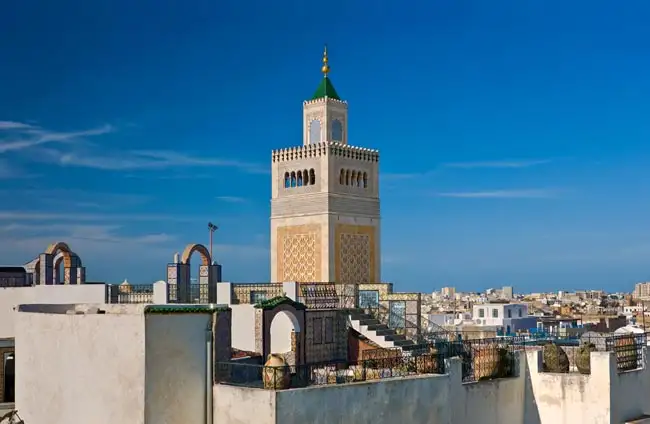
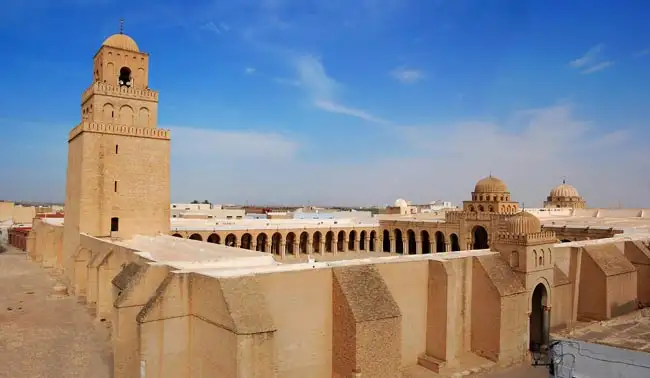
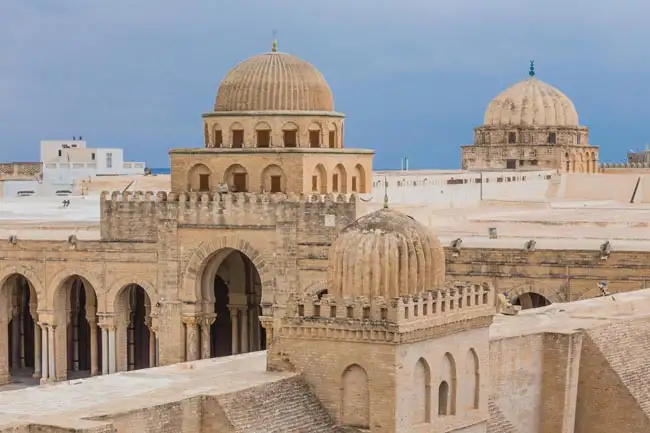
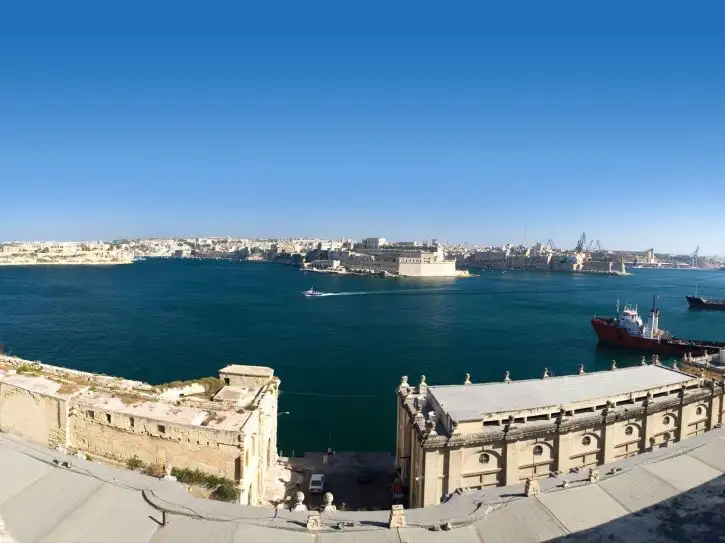
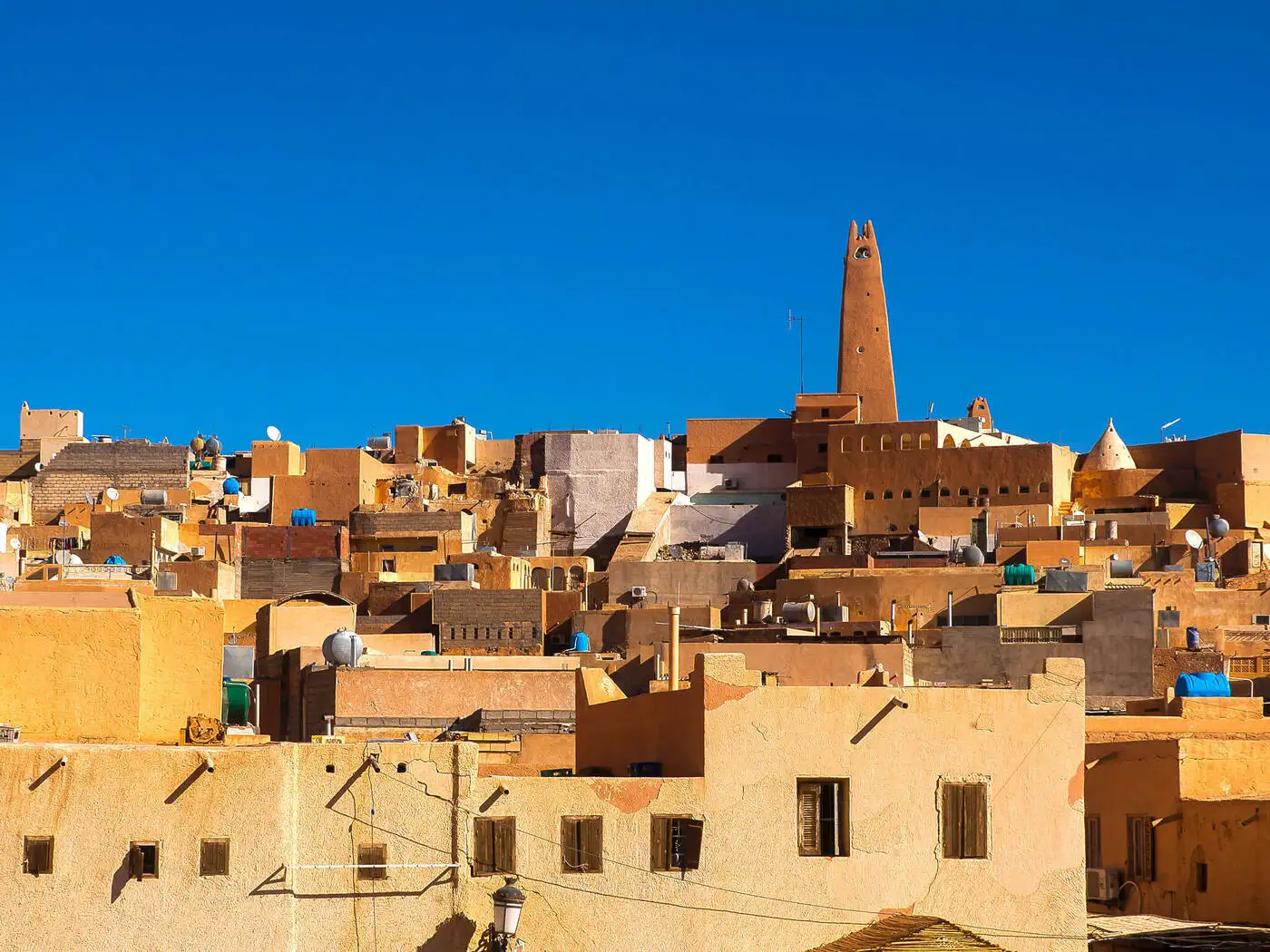
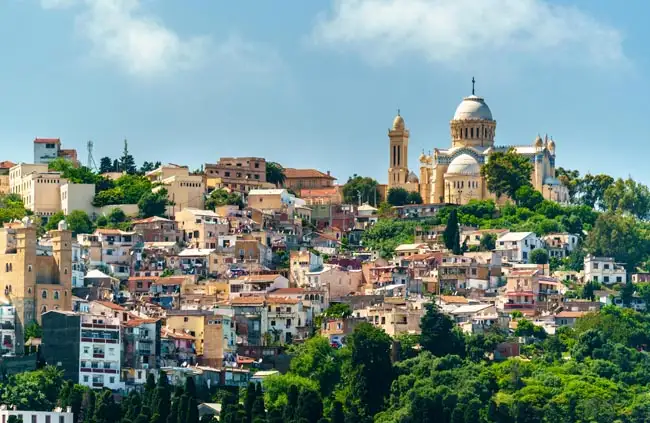
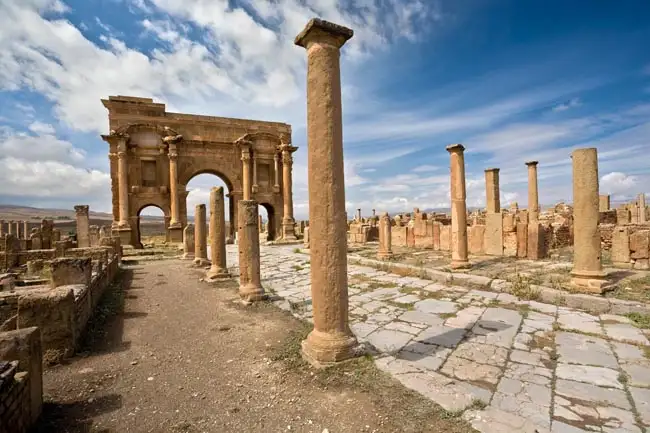
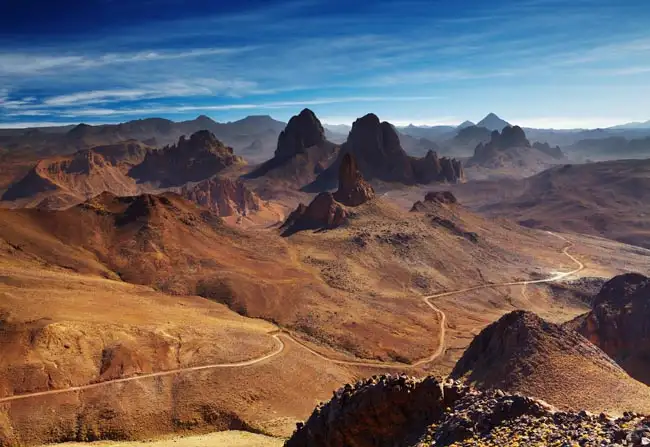
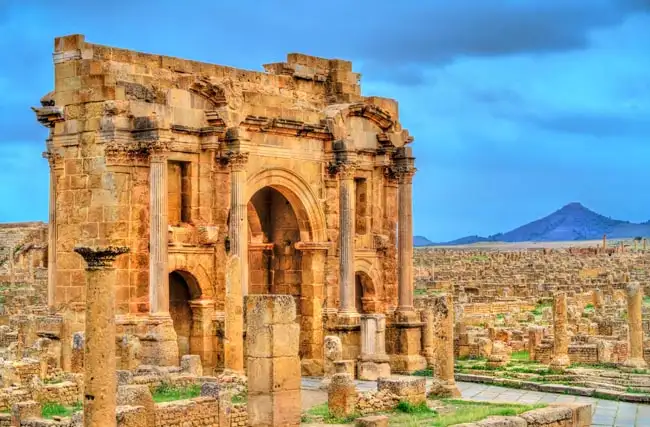
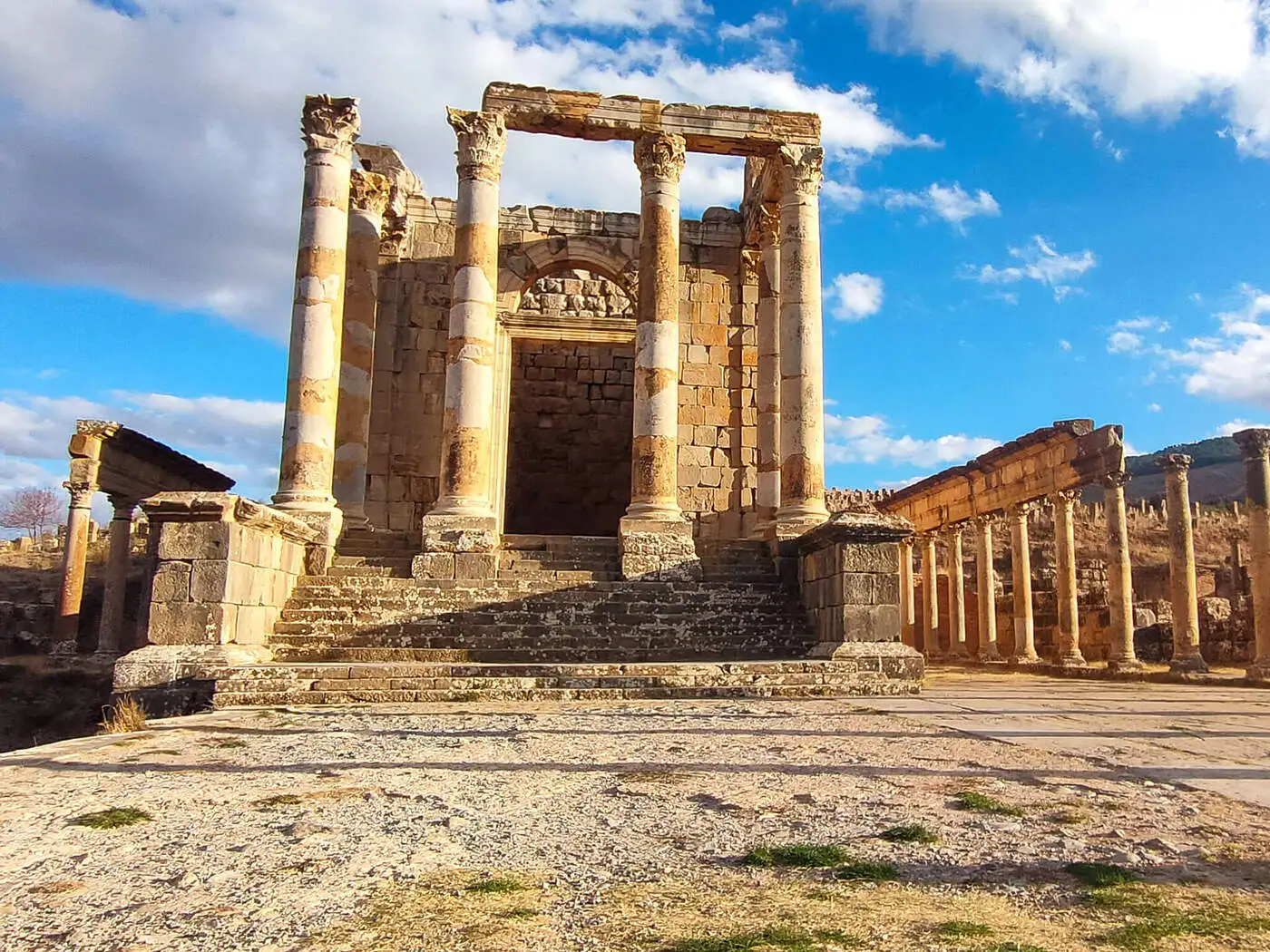
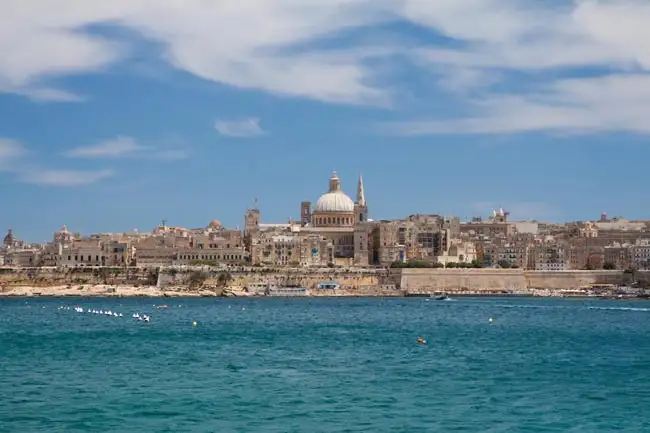
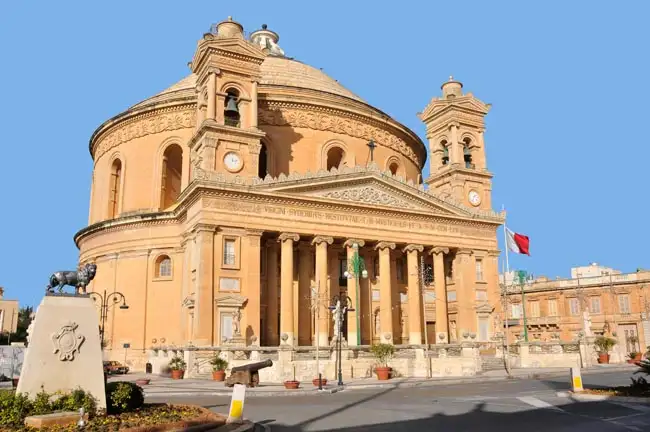
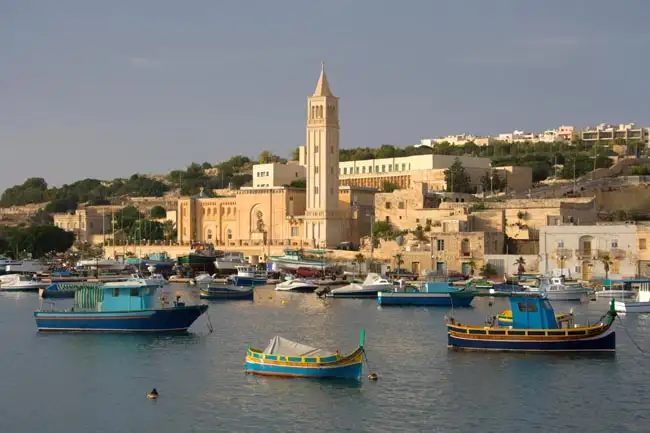
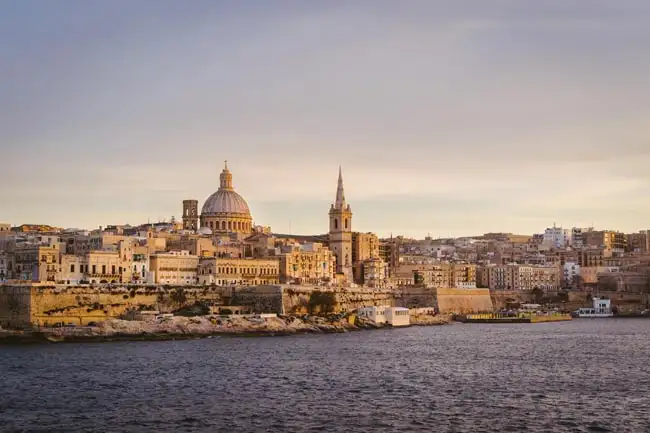
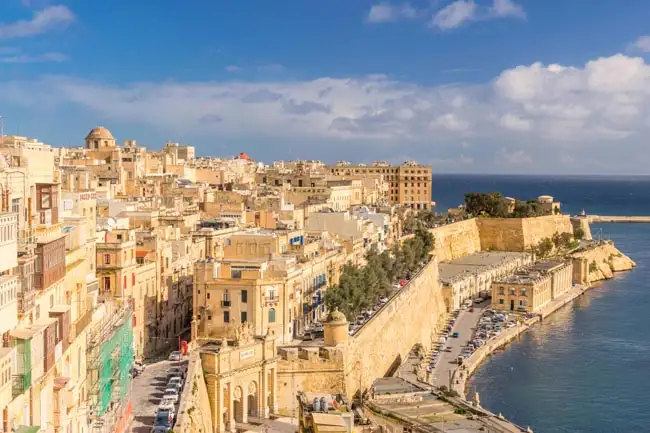
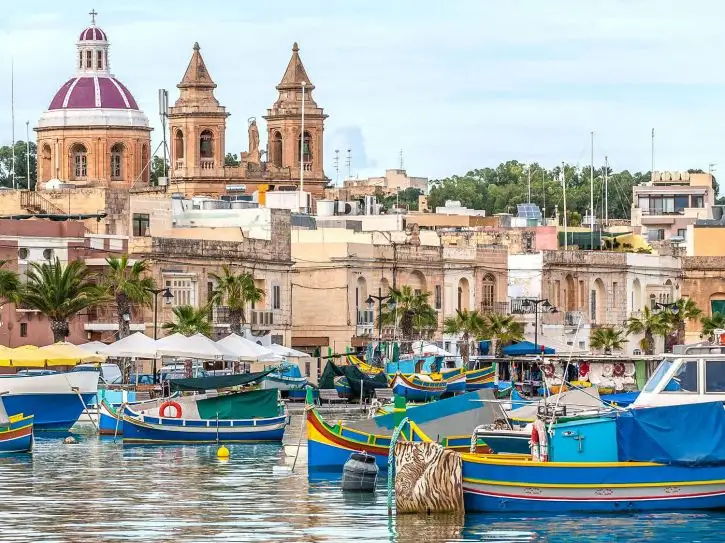
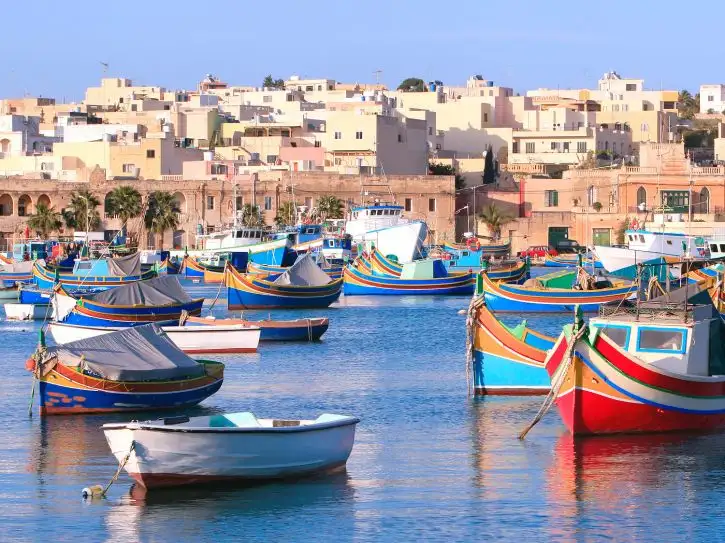
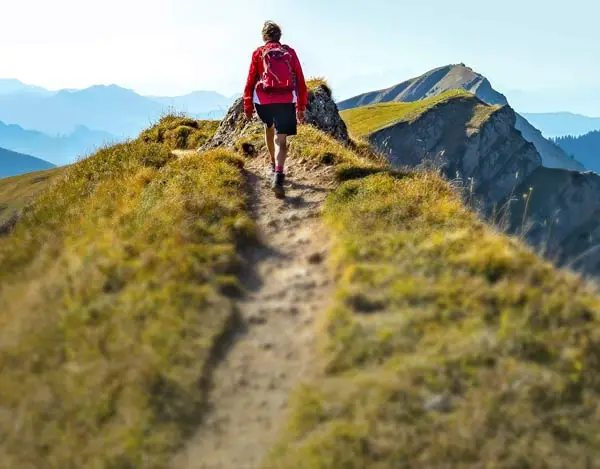
Book This Tour
- Final payment: Due 90 days prior to departure.
- Deposit: A non-refundable $500 USD Deposit is required at booking.
- Internal Flight Taxes: An extra $90 USD applies for taxes and fees on tour flights. The internal airfares are included, but taxes are listed separately as they may change. Exceptions are noted in Red.
- Optional Single Supplement: $1890 USD (number of singles limited).
(View options forsingle travellers) - Transfering Tour or Date: Transferring to another tour or tour date is only permissible outside of 120 days prior to departure and is subject to a $100 USD change fee.
(Read our cancellation policy) - DUE TO VISA APPLICATION PROCEDURES, BOOKINGS CLOSE AT 60 DAYS PRIOR
Prices below are per person, twin-sharing costs in US Dollars (USD). Pricing does not include airfare to/from the tour and any applicable taxes.
Frequently Asked Questions
- What is the maximum number of participants on a trip?Most of our tours carry a maximum of 18 participants; some tours (ie hiking tours) top out at 16. In the event that we do not achieve our minimum complement by our 90-day deadline, we may offer group members the option of paying a "small-group surcharge" as an alternative to cancellation. If all group members agree, we will confirm the trip at existing numbers; this surcharge is refundable in the event that we ultimately achieve our regular minimum. If the small group surcharge is not accepted, we will offer a refund of your deposit or a different trip of your choice.
- Can I extend my tour either at the beginning or end? What about stopovers?Yes, you can extend your tour either at the beginning or the end and we can book accommodation in our tour hotel. Stopovers are often permitted, depending on air routing. Stopovers usually carry a "stopover" fee levied by the airline.
- How do I make a reservation? How and when do I pay?The easiest way to make a reservation is via our website; during office hours, you are also more than welcome to contact us by telephone.
A non-refundable deposit is payable at the time of booking; if a reservation is made within 90 days, full payment is required. Some trips require a larger deposit. If international airline bookings require a non-refundable payment in order to secure space or the lowest available fare, we will require an increase in deposit equal to the cost of the ticket(s).
Early enrolment is always encouraged as group size is limited and some trips require greater preparation time.
Once we have received your deposit, we will confirm your space and send you a confirmation package containing your trip itinerary, any visa/travel permit related documents, invoice, clothing and equipment recommendations, general information on your destination(s), and forms for you to complete, sign and return to us. Your air e-tickets (if applicable), final hotel list, final trip itinerary, and instructions on how to join your tour, will be sent approximately 2-3 weeks prior to departure. - What about cancellations, refunds, and transfers?Please review our cancellation policy page for details.
- I am a single who prefers my own room. What is a single supplement?All of our tours have a single supplement for those who want to be guaranteed their own room at each location.
This supplement is a reflection of the fact that most hotels around the world do not discount the regular twin-share rate for a room by 50% for only one person occupying a room. Most hotels will give a break on the price, but usually in the range of 25-30% of the twin-share rate. This difference, multiplied by each night, amounts to the single supplement.
The conventional amount can also vary from country to country and some destinations are more expensive than others for single occupancy. In order to be "single friendly," the supplements we apply are not a profit centre for us and we do our best to keep them as reasonable as possible.
On most tours we limit the number of singles available, not to be punitive, but rather because many hotels allow for only a limited number of singles; some smaller hotels at remote locations also have a limited number of single rooms available.
Please note that most single rooms around the world are smaller than twin-share rooms and will likely have only one bed. - Do you have a shared accommodation program?Yes! If you are single traveller and are willing to share, we will do our best to pair you with a same-gender roommate. Please note that should we fail to pair you, we will absorb the single supplement fee and you will default to a single room at no extra charge.
